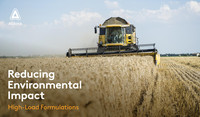
Herbicide resistance, blackgrass, cover crops & no-till methods discussed by Russell McKenzie, grower and agronomist from Cambridgeshire, UK

Cambridgeshire grower and agronomist, Russell McKenzie, is increasingly looking to the benefits of cover cropping within a wide range of tactics to protect his crops from herbicide-resistant blackgrass
Russell grows 995ha of combinable crops at John Sheard Farms, near Kimbolton about 65 miles (105km) north of London. Crops include winter wheat, winter barley, oilseed rape, spring beans, spring oats and spring barley. Winter wheat yields average around 11t/ha, but patchy blackgrass has shown to reduce this performance by between 2-4t/ha in places.
“We don’t see blackgrass everywhere on the farm, but where we have seen dense patches, we can see yields down to as low as 7t/ha,” says Russell. In addition to the lost yield there can also be knock-on effects on quality. “The grass weeds can encourage ergot to develop and we can lose out on milling wheat premiums,” Russell adds.
The battle to control the weed can incur further high costs and it is a battle that has increased steadily since more herbicide-resistant plants developed. In the early 2000s, spending about £40/ha (€47/ha) to control blackgrass using a residual herbicide was a robust and effective programme, explains Russell, but at that stage blackgrass was not resistant to acetolactate synthase (ALS) based treatments.
As the requirement for post-emergent treatments and residual stacking grew over the following few years, the bill rose to £70/ha (€82/ha). “The ALS herbicides were effective until 2011/2012, but we now only see 25-30% control at best to this active ingredient,” he says. Now, a robust pre-emergence herbicide programme plus or minus a spray close to emergence is costing between £100-130/ha (€117-153/ha). “Optimising residual performance is crucial,” he adds.
Russell blames the development of resistance on a number of factors, including having too few spring-sown crops in the previous rotation of first wheat, second wheat, oilseed rape.
“Back then it was difficult to argue against that rotation economically more than anything else, but with hindsight it relied too much on winter-sown crops and depended too heavily on the herbicides available. We were not breaking up that monoculture with spring crops. There was no long-term break between the crops to allow weeds to emerge and then control them out of the cropping cycle,” he reflects.
Russell shares a more detailed look at the techniques he has introduced at Sheard Farms in Part 2. Click here to read more.



